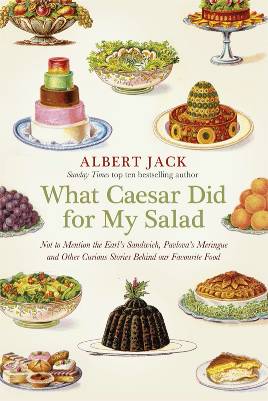A Lamington is a small sponge cake covered in chocolate icing and rolled in desiccated coconut that is hugely popular throughout Australasia. No arguing about the origins of this one (see Pavlova) as it is definitely Australian, although New Zealand’s strawberry version is widely claimed to be better. (Don’t they ever stop arguing, that lot?)
The cake owes its name to one Charles Wallace Alexander Napier Cochrane-Baillie (1860–1940), more conveniently known as the 2nd Baron Lamington. Thanks largely to the old boys’ network, he became assistant private secretary to the British Prime Minister, Lord Salisbury, in 1885.
In 1890, the government sent him to Vietnam and Siam (now Thailand) in an attempt to discourage the French from extending their colonies and in 1896 he replaced Sir Henry Norman as Governor of Queensland in Australia.
The name of the cake is deceptive, however, as it wasn’t the baron or his wife who came up with it but their chef, Armand Galland.
Like many of the best dishes, the invention of the Lamington arose from a desperate attempt to remedy a kitchen disaster against the clock.
Called upon to quickly create a cake for unexpected guests at Government House, Armand Gallard slightly burned his vanilla sponge and, with no time to spare, rolled slices of it in chocolate sauce and coconut in an attempt to cover up his error. The unusual cakes went down a treat.
Lady Lamington, who is known to have taken a keen interest in all things culinary from her letters to renowned food writer Hannah MacLurcan, was so pleased with the result that she asked for them to be served to guests on all official occasions.
The first known recipe for Lamington cake appeared in the Queenslander Magazine in 1902, while seven years later Amy Schauer, an authority on rich cakes and desserts, included the recipe in The Schauer Australian Cookery Book.
It’s not just New Zealand that has muscled in on the Lamington; some Scottish historians have also since tried to climb on to the bandwagon, suggesting that a sheep shearer’s wife from the village of Lamington once made the cake for other travelling sheep shearers, but there is no evidence to support this.
In 2006, the National Trust of Queensland declared the Lamington a state icon, while 21 July has been designated National Lamington Day.
It seems strange that the Lamington, Australasia’s most popular teatime cake, should have become definitively Australian thanks to a highly unpopular British Governor of Queensland and his French chef.
Ironically, Lamington himself hated the cakes that have become his enduring legacy, describing them as ‘those bloody poofy woolly biscuits.’ That sounds about right for an Australian national dish. – Albert Jack
Albert Jack AUDIOBOOKS available for download here


